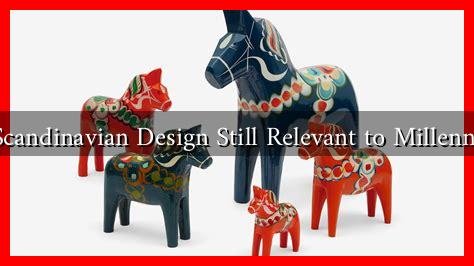-
Table of Contents
- Is Scandinavian Design Still Relevant to Millennials?
- The Core Principles of Scandinavian Design
- Millennials and Their Design Preferences
- Case Studies: Scandinavian Brands Captivating Millennials
- Statistics Supporting the Relevance of Scandinavian Design
- Conclusion: The Enduring Relevance of Scandinavian Design
Is Scandinavian Design Still Relevant to Millennials?
Scandinavian design, characterized by minimalism, functionality, and a deep connection to nature, has been a dominant force in the design world for decades. As we move further into the 21st century, one question arises: Is Scandinavian design still relevant to millennials? This article explores the enduring appeal of this design philosophy among the millennial generation, examining its principles, cultural significance, and practical applications in contemporary life.
The Core Principles of Scandinavian Design
To understand the relevance of Scandinavian design to millennials, it is essential to first grasp its core principles. Scandinavian design is rooted in the following concepts:
- Minimalism: Emphasizing simplicity and functionality, Scandinavian design avoids clutter and unnecessary ornamentation.
- Natural Materials: The use of wood, leather, and textiles reflects a commitment to sustainability and a connection to nature.
- Functionality: Every piece of furniture or decor serves a purpose, ensuring that design is not just about aesthetics but also about usability.
- Light and Space: Scandinavian interiors often feature large windows and light colors to create a sense of openness and tranquility.
Millennials and Their Design Preferences
Millennials, born between 1981 and 1996, are known for their unique preferences and values when it comes to design. Several factors contribute to their affinity for Scandinavian design:
- Sustainability: Millennials are more environmentally conscious than previous generations. They prefer products that are sustainable and ethically produced, aligning perfectly with the Scandinavian ethos of using natural materials and promoting eco-friendly practices.
- Functionality: With many millennials living in smaller spaces, the need for multifunctional furniture is paramount. Scandinavian design excels in creating versatile pieces that maximize utility without sacrificing style.
- Digital Influence: The rise of social media platforms like Instagram and Pinterest has made visually appealing designs more accessible. Scandinavian aesthetics, with their clean lines and bright spaces, are highly shareable and resonate with the millennial desire for a curated lifestyle.
Case Studies: Scandinavian Brands Captivating Millennials
Several Scandinavian brands have successfully captured the millennial market by embodying the principles of Scandinavian design:
- IKEA: Perhaps the most recognizable name in Scandinavian design, IKEA offers affordable, stylish, and functional furniture that appeals to millennials. Their commitment to sustainability, such as using renewable materials and reducing waste, resonates with eco-conscious consumers.
- Muuto: This Danish design brand focuses on modern interpretations of classic Scandinavian design. Their products are known for their innovative use of materials and colors, attracting millennials looking for unique yet functional pieces.
- HAY: Known for its contemporary furniture and home accessories, HAY combines playful designs with practicality. Their collaborations with various designers have resulted in products that are both trendy and timeless, appealing to the millennial aesthetic.
Statistics Supporting the Relevance of Scandinavian Design
Recent studies and surveys indicate that Scandinavian design continues to hold significant appeal for millennials:
- A survey by Statista found that 62% of millennials prefer minimalist design in their homes.
- According to a report by McKinsey & Company, 75% of millennials are willing to pay more for sustainable products, aligning with the values of Scandinavian design.
Conclusion: The Enduring Relevance of Scandinavian Design
In conclusion, Scandinavian design remains highly relevant to millennials due to its core principles of minimalism, functionality, and sustainability. As this generation continues to prioritize eco-friendly practices and multifunctional living spaces, the appeal of Scandinavian aesthetics is likely to endure. Brands like IKEA, Muuto, and HAY exemplify how this design philosophy can adapt to contemporary needs while maintaining its timeless charm. As millennials seek to create spaces that reflect their values and lifestyles, Scandinavian design will undoubtedly continue to play a significant role in shaping their environments.

